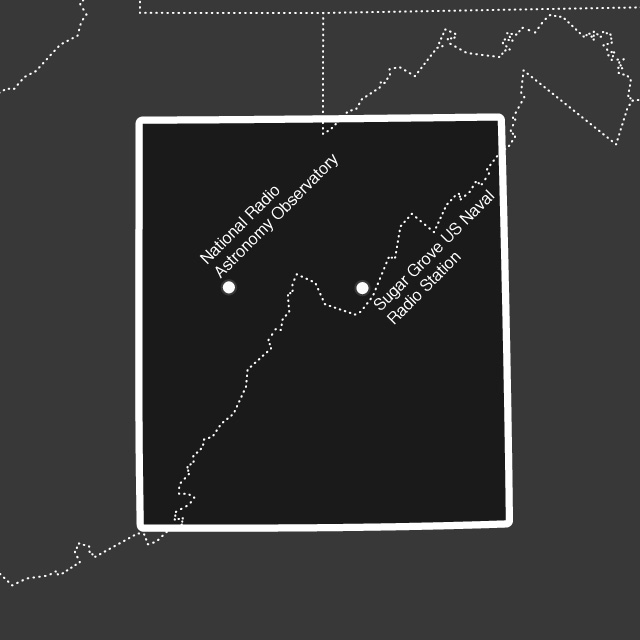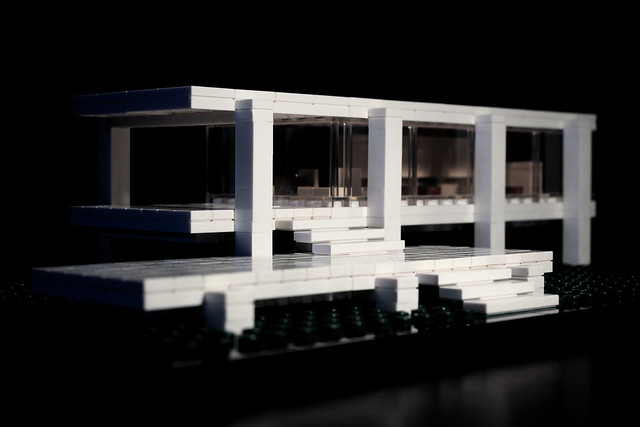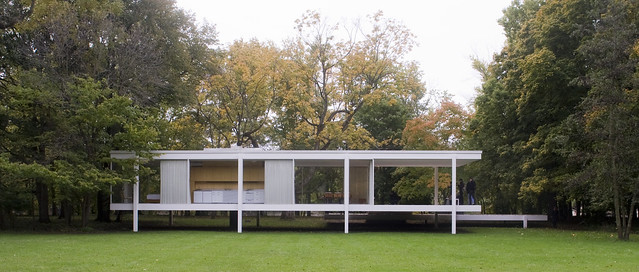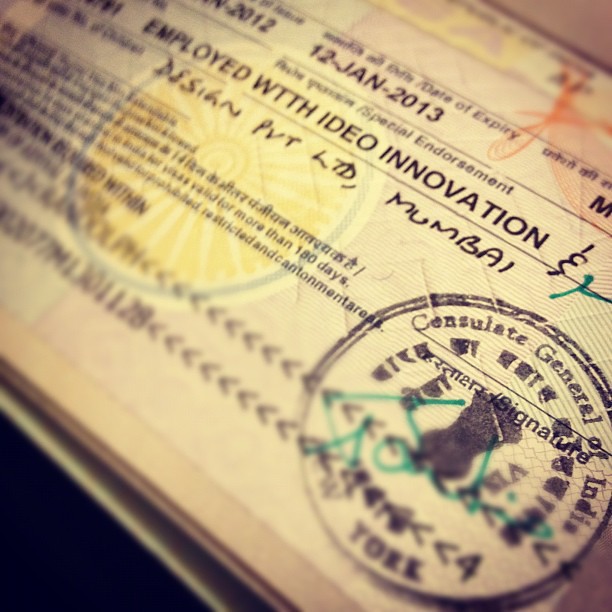
Amazing access, large in scope, but doesn’t begin to answer the question which keeps popping up throughout the film: What is the future of the Times. It was as if by just showing the process, how honest and hardworking the professional journalists are that the question was to be answered. A great snapshot in time, with good cinematography but with a lack of focus.
National Radio Quiet Zone
The United States National Radio Quiet Zone (wikipedia article) is fascinating, and is an evergreen topic being featured in wired (The Quiet Zone), the Daily (Nixed Signals), bOINGbOING (National Radio Quiet Zone a haven for people who say wireless signals make them sick) and now Al Jazeera, Escaping the radio smog:
While there are no studies which confirm that radio frequencies cause the symptoms discussed in the video, if the National Radio Quiet Zone is successful as a giant placebo and people can live their lives, then that is double-plus good.
What exactly is the US National Radio Quiet Zone? Glad you asked:
The astronomers who selected Green Bank as the site for the telescope in the mid-1950s chose carefully. The surrounding Allegheny Mountains provided a natural shield against radio and television broadcasts. Flanked by national forests teeming with black bears and wild turkeys, the area would remain undeveloped in perpetuity. And for all its physical isolation, it was only a day’s drive from many East Coast universities. Even back in the ’50s, though, farsighted scientists feared that radio-frequency emitters would eventually creep into the area. More aggressive protection would be necessary.
Thus, in 1958 the FCC set aside a rectangular-shaped territory the size of Massachusetts and Connecticut combined and called it the National Radio Quiet Zone, to be administrated by the National Radio Astronomy Observatory, a government-funded research facility in Charlottesville, Virginia. The NRAO later built other radio telescopes – in Socorro, New Mexico (the setting for the film Contact with Jodie Foster), and Tucson, Arizona – but it never again had the clout to impose quiet around them. Today, Green Bank is radio astronomy’s crown jewel. Over the years, the telescope has played a key role in understanding the behavior of pulsars, searching for extraterrestrial life, and probing the halo of hydrogen that surrounds the Milky Way galaxy. It’s one of the few facilities on the planet where radio astronomers can make observations at most points along the electromagnetic spectrum.
I think what makes this story interesting (and so evergreen) is both the extra-state nature of this zone, which spans three states, and the nature of the rules which must be followed inside an area of the US which is about as large as Massachusetts and Connecticut combined. Rules governed by the scientists, through the FCC, which virtually forces inhabitants to refrain from using many accouterments of “modern life” – or at the very least creating many workarounds to protect science. Because the rules are chiefly there to do two things: protect the scientific study of the cosmos, and to make electronic eavesdropping by many-acronym agencies possible.
God View in Port-au-Prince
Fast Company asks, Port-au-Prince 2.0: A City of Urban Villages? discussing Duany Plater-Zyberk’s new plan for Port-au-Prince (download the Downtown Port Au Prince Renewal Plan for full draft proposal):
Can Port-au-Prince be saved? More than a year after a catastrophic earthquake devastated Haiti, much of the capital is still rubble, with basic infrastructure (water, power, sewage) nonexistent. Reclaiming the core of the old city could require block-by-block redevelopment, at least according to the plans presented last night in Haiti by the architect Andrés Duany and his firm Duany Plater-Zyberk & Company.
The plans envision partial demolition of existing blocks to create parking and open space in the middle of each one. Strict codes and zoning rules would carefully regulate what gets built. Over time, one- and two-story building would be built out to four stories, with buildings on the perimeter opening onto the streets.
Answering his own question of why the plans privileged so much parking, Duany — a founding father of the New Urbanist movement — was characteristically blunt. “If Port-au-Prince is to be rebuilt, it can only be amortized by the middle class and above. The question is: how do we bring them back? Because you cannot reconstruct the city without them.”
I can’t quibble with the design: Port Au Prince historically had a mid-rise density (3-5 floors) so replacing it with a plan for growth approximating the existing height does not bother me. The focus on cars is a Middle Class MacGuffin: setting aside so much land and infrastructure for private automobiles with a hope (a hope) of supporting a perceived want, instead of supplying a concrete need – that of providing room for 2 million people – is a huge oversight. 3-4 floors is fairly dense with the inclusion of front arcades, while historical, makes sense in a tropical climate. Hopefully any zoning would allow flexibility of use so that live/work spaces could occupy the block creating a vibrant streetscape and income for those living in the units.
But the real shortfall is deeper than the design presented and is illustrated by the above image: a god’s eye view. While there were community design charrettes (I would like to know more about the process), urban design as a whole seem to suffer from overuse of the god view, divorced from the street and the person. Perhaps the scale of the system and the totality which the designer is trying to control (not to mention the history of SimCity) pushes the god view as the only way to illustrate the total system.
I wish I had a better alternative. I admit that I am looking for a better theoretical underpinning for my thoughts on urban design, and I hope to talk more about this in the near future.
33
Inside the White House: The Marine Sentries
Inside the B&H conveyor system
If you always wanted to see what the B&H Photo conveyor system was like, well, here you go.
Lego Architecture Series Farnsworth House
The Pruitt-Igoe Myth: an Urban History
Towers of Dreams: One Ended in Nightmare:
But they’re both classic examples of modern architecture, the kind Mr. Jencks, among countless others, left for dead: superblocks of brick and concrete high rises scattered across grassy plots, so-called towers in the park, descended from Le Corbusier’s “Radiant City.” The words “housing project” instantly conjure them up.
Alienating, penitential breeding grounds for vandalism and violence: that became the tower in the park’s epitaph. But Penn South, with its stolid redbrick, concrete-slab housing stock, is clearly a safe, successful place. In this case the architecture works. In St. Louis, where the architectural scheme was the same, what killed Pruitt-Igoe was not its bricks and mortar. (Minoru Yamasaki, who designed the World Trade Towers, was the architect.)
Zappos New Company Town: Downtown Las Vegas
Zappos wants to join the likes of Port Sunlight (Lever Soap), Pullman, IL (Pullman Coach), and the Reedy Creek Improvement District (Disney) in creating their own company town with Tony Hsieh’s new $350 million startup:
Hsieh and a few partners — the vast majority of the investment is Hsieh’s — plan to spend $350 million to develop and build a small city in the roughly 1.5-square mile downtown area around the Fremont East and Arts District areas (for CES-trekkers and other Vegas aficionados, it’s a few miles north of the Strip). Hsieh’s goal: To turn the overlooked area into a neighborhood not just for his workers’ coffee breaks, but a new live/work/play destination for Las Vegas’ emerging creative class.
This is the plan (modest it’s not): $100 million will go to the purchase of land (not including the new Zappos headquarters) and building acquisition. An additional $100 million will go to residential development including the building of high-rise apartments. Fifty million dollars will go to tech startups Hsieh plans to recruit to the area with seed investments of $100,000 or so apiece. Another $50 million will go toward drawing local small businesses like bakeries, yoga studios, restaurants, coffee shops and other requisite creative-class amenities. And because Hsieh wants people to move here and that requires having decent education for their children, another $50 million will go toward education and the building of — what else? — a school system.
This is an interesting counterpoint to the typical start-up’s wish to create an inward-facing campus (Google, Apple, et al) to house, feed and care for their employees. The urbanist in me hopes that Zappos’ succeeds in creating a place in such a damn-awful location which is Las Vegas. It would be well worth the investment to have their campus to be as permeable as the urban core.
It strikes me that so many new trends are just about “rediscovering” historical precedents. Look at Lifestyle center retail, such as Easton Town Centre (below), which explicitly returns to mixed-use town center designs. It isn’t so much as New Urbanism “won” (whatever that means), but that for the last 100 years or so, we were building automobile-dominated space, place and cities. Now developers and city agencies realize there is a pent-up demand for walkable urban living.
It will be interesting to see if the spaces they create are more like Fog Creek’s new office which is more private, supporting alone work; or, will the open-office illustrated by Foursquare’s new office be built. Kottke is dismayed that working in solitude on the decline:
The New Groupthink has overtaken our workplaces, our schools and our religious institutions. Anyone who has ever needed noise-canceling headphones in her own office or marked an online calendar with a fake meeting in order to escape yet another real one knows what I’m talking about. Virtually all American workers now spend time on teams and some 70 percent inhabit open plan offices, in which no one has “a room of one’s own.” During the last decades, the average amount of space allotted to each employee shrank 300 square feet, from 500 square feet in the 1970s to 200 square feet in 2010.
There was a time where we thought working alone was the only way to accomplish tasks; a certain strand of Taylorism of the office emerged in the early 20st Century, dominating space and hierarchy for half a century. Recently both technology and work theory has moved toward collaborative, and often multidisciplinary, teams. This is how we work at IDEO: small, nimble teams of experts in their own disciplines who come together to solve a problem.
My sense is that a healthy office culture values flexibility of space and workstyles in order to maximize their worker’s skills and output. It seems, to steal from Bob & Denise, office space needs a both-and solution: create varied typologies of space, each with a point of view and type of work clearly defined. Sprinkle liberally, and trust your people to choose where to work and when, so they can get their job done.
This means creating project spaces which facilitate groupwork; phone booths which allow single- or couples to make phone calls; small private offices which allow people to go “heads down;” kitchens and eating areas which allow mixing of colleagues; open-office studio space to house workers when they aren’t in project, phone or private space. The “white room” (above) at Stanford’s d.school is a great example of space which has a point of view, but is flexible. Classical “multipurpose space” (endemic with their horrible accordion dividers), without a point-of-view on how people might use the space, is a waste of resources and will lead to the exact negative feelings of open office Kottke abhors.











